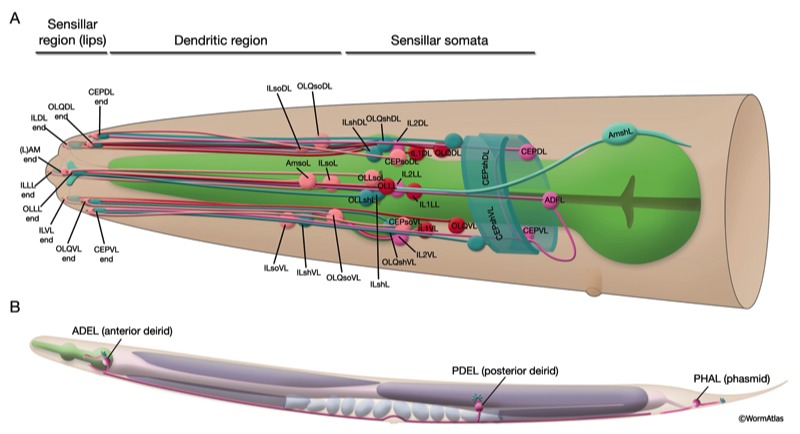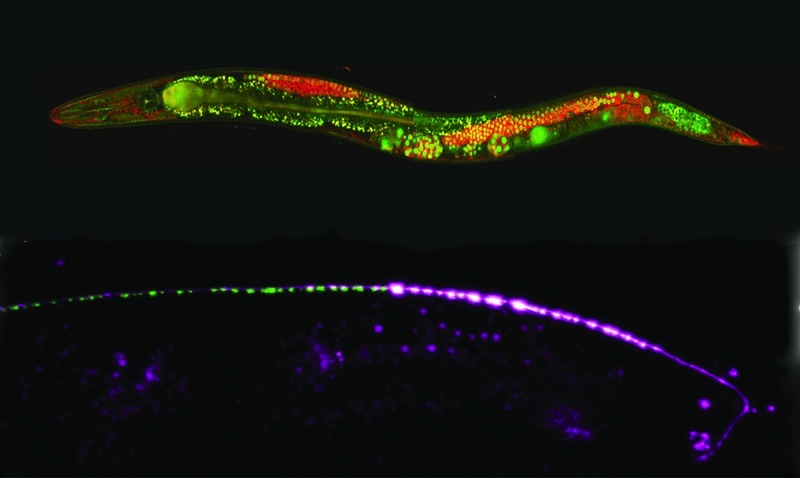Welcome to Arisaka-Elegans Lab at UCLA
Internal Links:
Google Drive : C. Elegans
Google Group : Arisaka-Elegans
Facebook Group : C. Elegance
Blog : arisaka-elegans.blogspot.com









Why C. Elegans?
What is the purpose of science? One can probably state that it is the advancement of an understanding of life, from its origin to consciousness. Following the Human Genome Project and the latest discoveries in epigenetics and neurobiology, the mystery of life is becoming unraveled from the genetic to the behavioral level. Due the profound complexity of the human brain, however, we have yet to understand its circuit dynamics. Even supposing we understand the brain’s 10^14 connections, we are still left with the question of how neural networks evolved from primitive life. A cardinal question arises; could the “Cambrian explosion” happen by nature’s invention of surpassing single-cell genome regulation to the complex genome regulation of multi-cellular organisms?
The attempts to answer these questions results in the strongest rationales behind choosing C. elegans as the model organism. It was the first multicellular organism to have its genome completely sequenced in 1998. Furthermore, the relation between its 97M base pairs of DNA and 302 neurons has been mostly uncovered. The connectome of these 302 neurons is established and remarkably understood. The dynamical functions of the nervous system, however, cannot be addressed by the connectome alone. How these functions are influenced by the environment for adaptation and learning remains to be uncovered. Students in this lab will focus on understanding the dynamical functions of the nervous system and how these functions change as a result of environmental interactions. Importantly, C. elegans is the only animal model currently amenable to a systems-level dynamic analysis.
Other commonly used animal models (fruit fly, zebrafish, mouse) have orders of magnitude more neurons and no well-established connectome. Systems-level analyses are not feasible in these species due to the lack of an anatomical framework to interpret imaging data, as well as limitations by available imaging technology. It is possible to image 302 neurons simultaneously – the entire nematode nervous system – but not millions or even hundreds of thousands of neurons. In addition, C. elegans is the only animal model for which we can establish a direct link between genes, neural circuits, and behavior. Therefore, C. elegans is the ideal organism to understand every single detail of dynamical function of neural networks, including genetic origin. That is the last remaining piece. Without its full understanding, we will never be able to understand the higher-order neural networks in human beings.
Furthermore, all three general steps to animal behavior exist and are observable in C. elegans; (1) external stimulation to sensory neurons, (2) processing of stimulation by internal neurons, and (3) excitation of motor neurons for to elicit motion. It remains too difficult to quantifiably and simultaneously observe all three steps in advanced animals. Needless to say, C. elegans does not have eyes or ears as we do. The organism senses other environmental conditions (temperature, chemicals, CO2 and O2 levels), however, quite better than humans. Moreover, recent studies show its remarkable sensitivity to UV lights, electric, and magnetic fields. Thus integrating several stimuli from the environment, the organism responds to the environment in given space and time. The question is, “how can C. elegans internally represent space-time in its neural system?” We are close to answering such fundamental questions. The goals of Arisaka Lab is to explore and answer such questions through the many experiments designed for and conducted by undergraduate students.
The attempts to answer these questions results in the strongest rationales behind choosing C. elegans as the model organism. It was the first multicellular organism to have its genome completely sequenced in 1998. Furthermore, the relation between its 97M base pairs of DNA and 302 neurons has been mostly uncovered. The connectome of these 302 neurons is established and remarkably understood. The dynamical functions of the nervous system, however, cannot be addressed by the connectome alone. How these functions are influenced by the environment for adaptation and learning remains to be uncovered. Students in this lab will focus on understanding the dynamical functions of the nervous system and how these functions change as a result of environmental interactions. Importantly, C. elegans is the only animal model currently amenable to a systems-level dynamic analysis.
Other commonly used animal models (fruit fly, zebrafish, mouse) have orders of magnitude more neurons and no well-established connectome. Systems-level analyses are not feasible in these species due to the lack of an anatomical framework to interpret imaging data, as well as limitations by available imaging technology. It is possible to image 302 neurons simultaneously – the entire nematode nervous system – but not millions or even hundreds of thousands of neurons. In addition, C. elegans is the only animal model for which we can establish a direct link between genes, neural circuits, and behavior. Therefore, C. elegans is the ideal organism to understand every single detail of dynamical function of neural networks, including genetic origin. That is the last remaining piece. Without its full understanding, we will never be able to understand the higher-order neural networks in human beings.
Furthermore, all three general steps to animal behavior exist and are observable in C. elegans; (1) external stimulation to sensory neurons, (2) processing of stimulation by internal neurons, and (3) excitation of motor neurons for to elicit motion. It remains too difficult to quantifiably and simultaneously observe all three steps in advanced animals. Needless to say, C. elegans does not have eyes or ears as we do. The organism senses other environmental conditions (temperature, chemicals, CO2 and O2 levels), however, quite better than humans. Moreover, recent studies show its remarkable sensitivity to UV lights, electric, and magnetic fields. Thus integrating several stimuli from the environment, the organism responds to the environment in given space and time. The question is, “how can C. elegans internally represent space-time in its neural system?” We are close to answering such fundamental questions. The goals of Arisaka Lab is to explore and answer such questions through the many experiments designed for and conducted by undergraduate students.